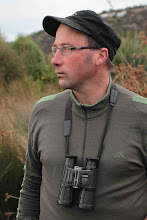Tuesday, September 11, 2012
Black swan -25 years old
Peter Langlands
120912
Recently I found a dead black swan with a metal band in it while bitterns at Lake Ellesmere. Upon looking down at the bird I noticed that it had a metal band on it’s leg. Immediately I was excited as I remembered finding lots of dead swans at the lake in the 1980’s and sending the banding reports to the then Wildlife Service. I had known of little or any banding that had taken place at the lake in recent years. My suspucions were confirmed when the banding report came back that the bird had been banded in 1988, making it 25 years old. The swan was freshly dead.
Banding birds gives a real insight into birds’ movements, longevity and for breeding – productivity studies allows individual birds to be followed. Many birds in New Zealand are long-lived, in comparison to the Northern Hemisphere counterparts, and has time goes by the longevity records increase. Already some albatross marked in New Zealand are over 50 years old. Banding a bird makes that bird individually recognisable. I have been interested in bird watching and ornithology since 1980 when I first started bird watching at Lake Ellesmere.
Living in Christchurch the lake is a fantastic bird watching location and is one of the locations, if not the location, with the highest numbers of bird species recorded from it in New Zealand . Ellesmere is particularly notable for its vast waterfowl populations and waterfowl from all around New Zealand will annually pass through the lake. The lake is a national stronghold for black swans, mute swans, Canada geese, grey teal and at time shovellers. Having the lake on my doorstep, as a virtual wilderness, is an asset. A place to relax, especially since the earthquakes, and with each visit to the lake I leave in with an interesting discovery. A black swan at a quarter of a century old certainly rates up there.
Photo- Lake Ellesmere- a vast canvas for the inquiring mind of a young birdwatcher
Subscribe to:
Posts (Atom)
